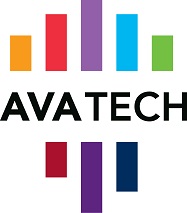Blog

Guest Blog: The Innovation Challenge – Research that matters: Staffordshire University and AVA Technologies Ltd
07 Oct 2014
 AVA Technologies Ltd are a Staffordshire University spin-out company that use ground-breaking Spectral 360® technology to process CCTV footage for post incident analysis. The innovative analysis techniques that the company uses were developed by a PhD research team working in collaboration with the technology transfer and commercialisation team at Staffordshire University.
AVA Technologies Ltd are a Staffordshire University spin-out company that use ground-breaking Spectral 360® technology to process CCTV footage for post incident analysis. The innovative analysis techniques that the company uses were developed by a PhD research team working in collaboration with the technology transfer and commercialisation team at Staffordshire University.
The development of Spectral 360® led to the creation of AVA Technologies Ltd, initially funded with a modest amount of financial support from the Higher Education Innovation Fund and from the Advantage Proof of Concept Fund (initially delivered by Advantage West Midlands).
Adaptive Video Analytics Technologies Ltd (AVA) have developed a unique algorithm specifically for the video analytics market. AVA’s technique tops the league table on the independent evaluation of object detection algorithms and gives an overall performance result of 98.9% on the UK Home Office zone testing data sets.
The project began as a programme of PhD research within Staffordshire University’s Centre for Intelligent Information Systems (CIIS). Spectral 360® was developed from doctoral research, algorithm development and rigorous methodology. This revolved around a systematic performance assessment, anchored on experimental designs with qualitative and quantitative performance measures, including tests of statistical significance http://www.changedetection.net/ .
Image processing research has identified the performance issues of current video analytic systems to deal with challenging image conditions, as a key confidence issue for the market to further adopt this technology. Techniques, based solely on statistical methods, fail to tackle the practical user interface and operational requirements of applications. Video forensics requires analysis of large volumes of information and it can take an investigator 7-8 hours to review 24 hours of footage to find a specific incident. AVA’s disruptive technology has been proven to provide the most accurate and reliable analysis available on the market today. Their software significantly shortens the length of time that investigators view video material by automatically generating a summarised video that focusses only on key events. The reduction of video viewing time lowers the usage time of Display Screen Equipment which can cause injury or further tiredness for the user. By shortening viewing time, AVA’s software also mitigates potential physical or psychological trauma.
The research undertaken by the AVA team produced a novel object detection algorithm and software suite that includes tools for use in applications where real-time video analysis under operational conditions may be afflicted by adverse conditions, such as varying illumination. The technology was patented and trademarked as Spectral 360®. It was tested rigorously against 22 other algorithms from all over the world, on a comprehensive benchmarking set of challenging videos, using seven performance measures. Spectral 360® emerged as the clear winner. The key features of Spectral 360® are its resilience to illumination changes and its high capability to detect objects; it also works with minimal intervention from a human operator. These capabilities result in improved operational quali ty and efficiency, enhanced object detection, reduced false-alarm rate, reduced missed-detection rate, high adaptability to environmental conditions and a low number of video frames required for training the system.
ty and efficiency, enhanced object detection, reduced false-alarm rate, reduced missed-detection rate, high adaptability to environmental conditions and a low number of video frames required for training the system.
Commercialisation and a focus on solving real challenges facing the industry was embedded into this doctoral work as a key target at the outset of the research project. The knowledge transfer team at Staffordshire University found commercial opportunities and secured seed funding for AVA Technologies Ltd, which was spun out from the unit with support from the University’s Commercial Ventures Board.
AVA has an expanding client base and a wide range of applications including solutions focussed on the current major sectors in security, government, transport, financial services and entertainment. Further research and development continues, with a recent grant awarded to AVA by the Technology Strategy Board. The on-going work of the translational team is now building on the foundation of an excellent technology and includes identifying and tracking an object across multiple cameras.
The employer engagement team demonstrated the video analytics tools to UK police forces to show how they could use the technology to build up credible test cases and scenarios. Field testing has demonstrated that this novel technique can detect events missed by a vigilant human operator. The knowledge transfer team provided support to patent the technology and to develop a business and marketing plan confirming the worldwide market to be $623million; the focus now is to raise finance for the business.
This case demonstrates a process of transferring knowledge and expertise that goes beyond higher education and public sector research to the benefit of society and the economy, through successful collaboration with the knowledge transfer team, employer engagement team, academics and industry.
Sandra Booth, Director of Enterprise and Commerical Development at Staffordshire University